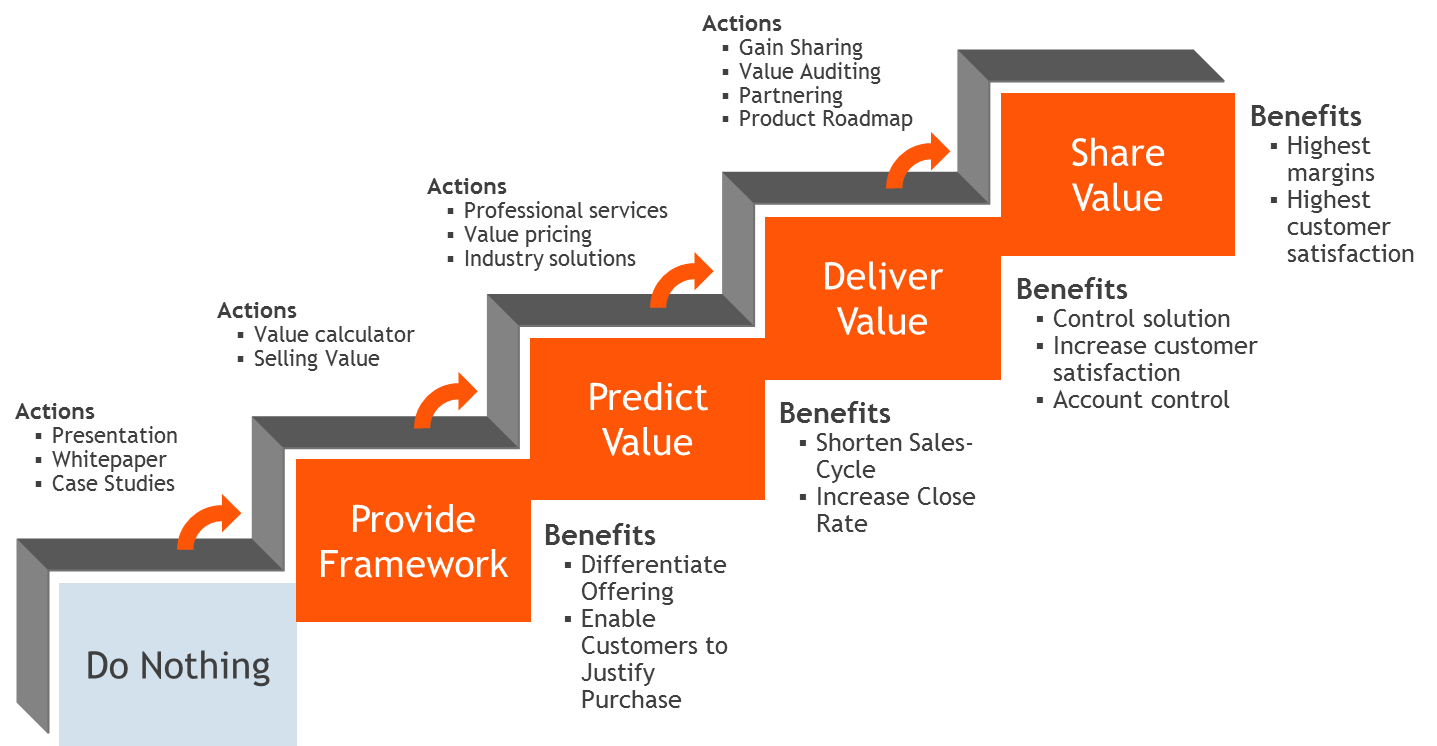In today’s economy, having a compelling business value proposition and being able to deliver against that promise is not a “nice to have,” it’s the price of admission. Companies today constantly vie for business decision makers’ attention and the opportunity to sell their product or solution.
Unfortunately, once given the opportunity to present, many companies lose sales by failing to convey the business value of their offering in a way that convinces the business decision maker to act. While many sales and marketing staff tend to think of their value proposition in terms of discrete features, functions and benefits, business decision makers think about products and services in a completely different way.
Therefore, to be effective, sales and marketing organizations need to build a “business” perspective into their value proposition to appeal to business decision makers and ultimately close more sales.
The Evolution of a Business Value Proposition
To further explain what we mean by a business value proposition, below you’ll find the “Evolution of a Business Value Proposition” framework. After working with numerous organizations challenged with communicating and delivering a business value proposition, we identified five levels of evolution.
Level One: Do Nothing
The first level is Do Nothing, where many companies are today.
Level Two: Provide Framework
The second level is Provide Framework, where companies are able to describe the potential business impact of their product or solution within a customer environment. An easy way to think about this is, “What are the direct revenue enhancing, cost reducing, and strategic business benefits associated with your offering?”
Providing your customers with a business value framework is an excellent way to capture business decision makers’ attention and interest in moving to the third level.
Level Three: Predict Value
At this level, your sales organization works with the customer to model the potential business impact and return on investment associated with your offering. This step adds a powerful step to the selling process, vastly reducing decision making time and the ability to generate budget.
Just ask yourself, “With a compelling ROI, how can a competent business decision maker not purchase from you knowing they are leaving money on the table?”
Level Four: Deliver Value
The next level in the evolution is Deliver Value. It’s at this level where your company and your customer measure the business impact previously forecasted, identify where value isn’t being captured and take corrective action. What an incredible way to build customer loyalty, drive associated services and follow-on sales opportunities!
Level Five: Share Value
The final level is Share Value, where you enter into shared risk, reward and gain sharing arrangements. Most companies ultimately want to do business at this level when they are confident of the value being delivered to their customers, and want to maximize the amount of money earned from any client. However, you can think of these levels as “stairs.” You need to take one step at a time when evolving your business value proposition; don’t jump ahead until you have mastered the previous level.

Conclusion
In today’s economy, having a compelling business value proposition and being able to deliver against that promise is crucial. Where is your company in its business value proposition evolution? Where would you like your company to be? Are your sales being hindered through lack of a compelling business proposition? If so, evolve your value proposition to be more compelling.

Resources
Connect with Darrin Fleming on LinkedIn.
Join the Value Selling for B2B Marketing and Sales Leaders LinkedIn Group.
Visit the ROI Selling Resource Center.














